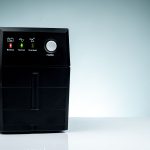The Need For Power Factor Correction
Power factor correction is a critical component in the realm of electrical systems.
This technical term may sound complex, but it’s essential for boosting efficiency and reducing energy costs.
The concept revolves around improving the power factor, indicating how effectively electrical power is used.
In simple terms, power factor correction helps your system consume less reactive power, which results in lower electricity bills and longer equipment life expectancy.

Electronics are at risk from power surges, spikes, and electrical noise, leading to damage and increased energy costs.
The PowerwoRx Clean Power System by Continental Power Corporation offers complete protection against these disturbances and ensures maximum energy savings. Our UL-certified products cater to residential, commercial, and industrial needs.
Protect your equipment and save on energy. Send us a year’s worth of electrical bills, and we’ll show the savings—contact (724) 858-6653 or contact us for a consultation.
Table Of Contents:
- What is Power Factor Correction?
- Power Factor Correction: A Pathway to Enhanced Efficiency and Savings
- How Does Power Factor Correction Work?
- When Should Power Factor Correction be Used?
- Understanding the Different Types of Power Factor Correction
- What Are the Advantages of Using Power Factor Correction?
- FAQs in Relation to Power Factor Correction
- Conclusion
What is Power Factor Correction?
The concept of power factor correction may seem complex, but it is a fundamental aspect of improving the efficiency and cost-effectiveness of electrical systems. It revolves around reducing the consumption of reactive power within these systems.
Digging into Power Factor
To grasp what power factor correction entails, we first need to understand the power factor. This term refers to the ratio between active (or real) power and apparent power within an AC circuit. Active or true power is responsible for doing actual work, such as lighting up bulbs or running motors, while apparent power represents simply multiplying the total voltage by the current drawn from your grid.
An ideal system would convert all energy into useful work without any losses—this corresponds to having a high power factor close to one. However, many commercial loads have inductive properties, resulting in lagging currents, leading us toward poor or low power factors.
The Imperative for Power Factor Correction
This is where Power Factor Correction (PFC) comes into play. When there is suboptimal utilization due to low power factors resulting from the load’s inductive contribution, PFC becomes crucial for enhancing efficiency and averting potential issues like overheating equipment, unnecessary tripping of circuit breakers, and increasing overall costs associated with wasted energy.
PFC can be likened to adjusting car engine performance: just as you would tune up your vehicle’s engine for optimal fuel usage and output, PFC fine-tunes our AC electric system, minimizing wastage while maximizing productivity.
Power Factor Correction: A Pathway to Enhanced Efficiency and Savings
In the realm of commercial and industrial operations, power factor correction is a game-changer. As businesses seek ways to optimize their electrical systems, understanding the benefits of this process becomes crucial.
Cutting Down Energy Costs
A poor or low-power-factor environment can result in high demand charges on your electricity bill due to inefficient use of active power. By effectively calculating power factor regularly and implementing corrective techniques such as installing capacitors within switching supplies or dynamic filters, you reduce wasteful consumption, which translates into substantial savings on overall electricity expenditure.
Bolstering System Reliability
The impact extends beyond cost-effectiveness; improving the apparent power through efficient reactive load management enhances system reliability. Voltage drops caused by overloading conditions in an AC Power System are common consequences of a low-power-factor scenario that may lead to unexpected breakdowns.
By correcting these issues via strategic investments in infrastructure such as advanced wattmeter reads true power systems, companies ensure smoother operation reducing downtime considerably.
Prolonging Equipment Life Expectancy
Another critical aspect where businesses stand to gain from proper implementation lies in extending operational lifespan significantly. High strain environments induced by excessive current waveform resulting from poor factors accelerate wear-and-tear leading towards premature failure. Effective mitigation strategies centered around active interventions enhance longevity substantially, ensuring a better return on investment (ROI) on expensive machinery assets.
Safety Measures for Personnel Safety Improvements
Last but not least, safety – An often overlooked yet vital component when dealing with complex installations like DC voltage systems. Excessive currents arising from the load’s reactive contribution could cause overheating, posing risks, especially during peak loads. Implementing suitable preventive measures thus ensures safer workspaces while simultaneously increasing efficiency across all levels, making it a win-win situation for everyone involved.
Power factor correction is a game-changer for businesses, slashing energy costs and boosting system reliability. You can prevent wasteful consumption and costly breakdowns by implementing corrective techniques like capacitors or dynamic filters. Plus, it extends equipment life expectancy and improves safety measures.
How Does Power Factor Correction Work?
The goal of power factor correction is to enhance the effectiveness of an electrical system by lessening the consumption of reactive energy.
Incorporating Capacitors for Better Efficiency
Inductive loads such as motors and transformers often result in poor or low power factors. This happens because these devices cause the current waveform to lag behind the voltage, which reduces the ideal value of your system’s power factor.
Capacitors are integrated into AC (alternating current) circuitry to mitigate this issue. These capacitors provide leading currents, which offset some or all of the load’s contribution towards reactive energy flow, thereby improving overall performance.
Determining Your System’s Power Factor
A crucial step within any effective strategy involving corrective measures against low power factors includes accurately calculating the said ‘factor.’ You can achieve this using wattmeter readings for real true power and ammeter/voltmeter measurements for total volt-amperes.
Moving Towards Static vs. Dynamic PFCs
Considering static versus dynamic corrections could be beneficial if you look at ways to enhance your system’s effectiveness. The former employs fixed capacitors providing constant support irrespective of changes occurring within load conditions, whereas the latter utilizes advanced electronics-equipped switching supplies adapting according to changing needs, thus offering precise control over the entire operation.
When Should Power Factor Correction be Used?
However, knowing when this process should be implemented within your power supply is important.
1. Presence of Low Power Factor
If you’re dealing with a low power factor, specifically below 0.9, there’s likely a high level of reactive power compared to real or active power in your AC power system. This imbalance can lead to inefficiencies, increase operational costs, and put undue stress on equipment.
2. High Levels Of Harmonic Distortion
Beyond just having poor or low power factors at play, another scenario that calls for immediate implementation of active power factor correction methods would be if there are significant levels of harmonic distortion present within the current waveform data being read by ammeter readings, which yields apparent tools like wattmeters that read true powers.
These distortions could potentially interfere with the functioning of sensitive electronic devices, such as switching supplies, causing them to malfunction over time unless corrected early enough through calculated interventions involving multiplying total voltage against DC voltages, among other strategies.
3. Ongoing Electrical Infrastructure Investment Plans
In cases where commercial or industrial entities have ongoing plans for investing in their existing infrastructure setups, incorporating provisions aimed at correcting any potential future issues related to bad factors before they arise becomes even more critical than ever—thus saving both valuable resources (time and money) while simultaneously improving overall safety standards across the board too.
It’s all about proactively addressing these concerns to ensure smooth, uninterrupted operations long-term without compromising quality service delivery or risking the health and safety of personnel working around these systems.
Power factor correction is key for boosting electrical system efficiency and reliability. It’s particularly crucial when dealing with low power factors, high harmonic distortion levels, or during infrastructure investment planning. Proactive implementation can save time, money, and enhance safety.
Understanding the Different Types of Power Factor Correction
The two main types of power factor correction, static and dynamic, each has unique applications. The choice between them depends on the specific needs of your electrical system.
Exploring Static Power Factor Correction
In a nutshell, static power factor correction uses capacitors to counterbalance the load’s inductive contribution. These capacitors store energy during every AC half-cycle before releasing it back into the circuit—thus effectively minimizing reactive power consumption.
This method proves particularly effective for systems with stable loads, like motors operating at a constant speed. However, its effectiveness diminishes with fluctuating loads due to slower adaptability.
Diving Into Dynamic Power Factor Correction
Moving onto dynamic or active power factor correction, this technique utilizes electronic controllers and switchable capacitor banks that allow real-time adjustments according to load conditions—a perfect fit for complex industrial settings where such variations are commonplace.

A significant advantage is its ability to correct poor or low-power factors and mitigate harmonic distortion—an issue known to cause equipment damage over time. Learn more about Dynamic PFC here.
- Understanding ammeter readings yield apparent vs. real power output information crucial when calculating your power factor meter readings.
- Your decision regarding which type suits you best should be based on whether you deal mostly with consistent or variable loads.
- Last but certainly not least: remember that both methods aim towards efficiency improvements within an AC power system through proper power factor correction.
What Are the Advantages of Using Power Factor Correction?
The implementation of power factor correction in electrical systems offers a plethora of benefits. These advantages range from monetary savings to improved safety, making it an indispensable tool for commercial and industrial entities.
Savings on Energy Costs
A low power factor signifies energy inefficiency, which translates into inflated electricity bills. Businesses can substantially reduce their energy expenditure by rectifying the poor power factor through active measures.
Better System Reliability
An optimized power factor lessens the burden on your electrical equipment by curtailing reactive power consumption. This not only boosts overall system performance but also minimizes the chances of unexpected breakdowns or malfunctions within your infrastructure.
Prolonged Equipment Life Expectancy
Continuous exposure to low power factors may lead to premature wear and tear on electric devices. Employing effective methods like calculating accurate ammeter readings yields apparent real powers that contribute positively towards maintaining a healthy load’s inductive contribution, ensuring the longevity of these assets. This saves you significant amounts over time due to decreased replacement costs and maintenance fees.
Safety Improvements
In addition to economic gains, enhancing a system’s electrical safety profile is another crucial advantage offered by efficient power factor correction techniques. A well-regulated AC/DC voltage with a high-quality current waveform results in safer working conditions for regular personnel interacting with these systems.
This understanding aids switching supply designers who work tirelessly behind the scenes, ensuring wattmeters read true powers by multiplying total voltages across volt-amperes under different DC voltage circumstances, maximizing all aforementioned benefits simultaneously.
FAQs in Relation to Power Factor Correction
Why is power factor correction needed?
Power factor correction enhances electrical system efficiency, reduces energy consumption and costs, and prolongs equipment lifespan.
Do power factor correction devices work?
Absolutely. Power factor correction devices effectively improve power quality by reducing reactive power in the system, leading to increased operational efficiency.
Does power factor correction reduce electricity bills?
Yes. By improving the efficiency of your electrical systems through power factor correction, you can significantly reduce your energy bills.
What is the maximum power factor correction?
The ideal or maximum achievable corrected value for a system’s Power Factor (PF) is one or unity; anything less indicates inefficiency that could be improved with power factor correction.
Conclusion
Power factor correction is no longer a complex term, right?
We’ve unraveled its significance in enhancing the efficiency of electrical systems.
Reducing reactive power consumption, it’s your ticket to cost savings and equipment longevity.
You now know when to employ this strategy—particularly when power factors dip below 0.9 or harmonic distortion levels are high.
What is the choice between static and dynamic types? It all depends on your specific needs!
In essence, power factor correction is an unsung hero in electricity management, improving reliability, safety, and those bottom-line figures.
Find out how proper power conditioning can save you money on electricity. Call (724) 858-6653 or contact us for a consultation.







